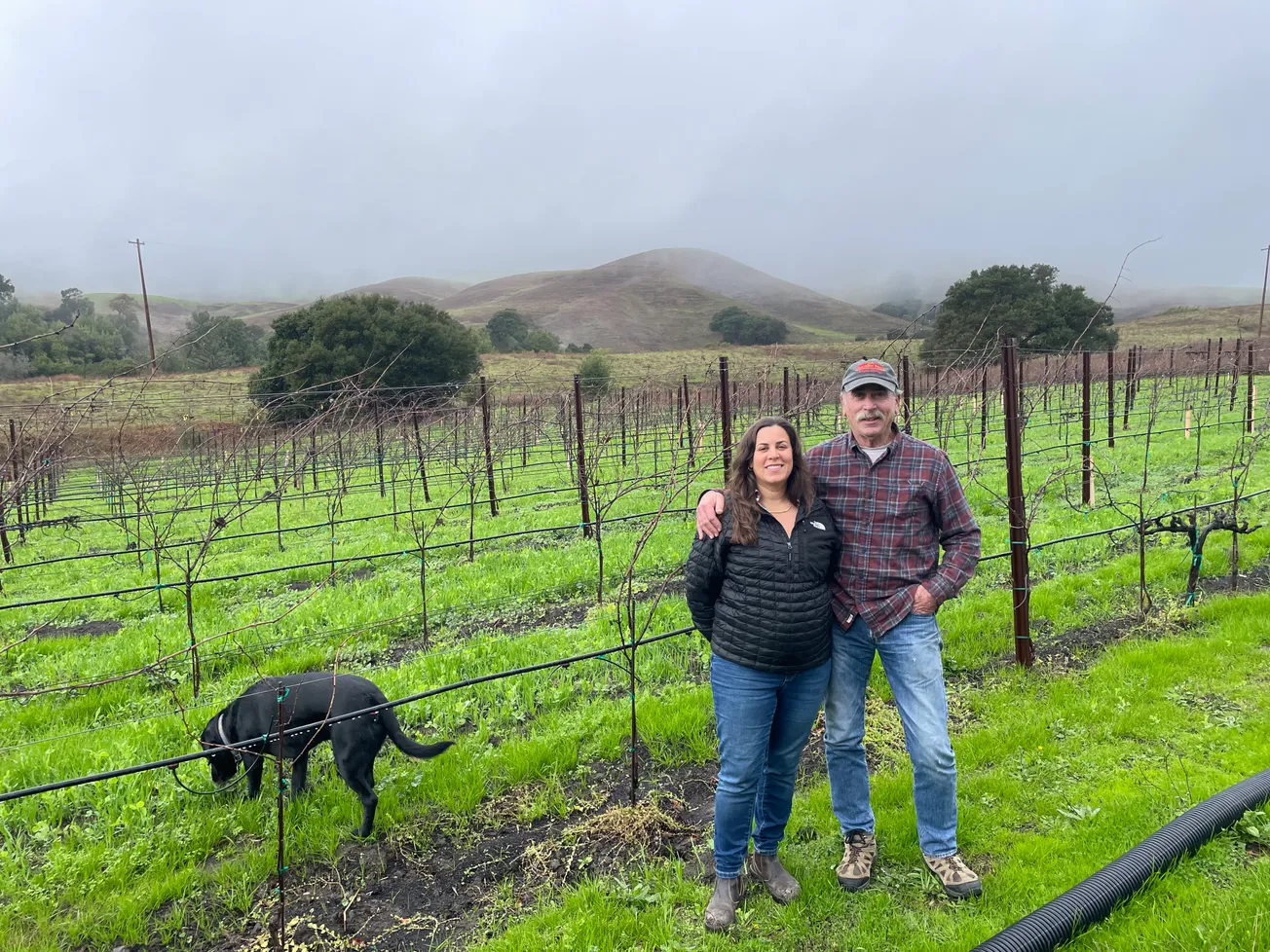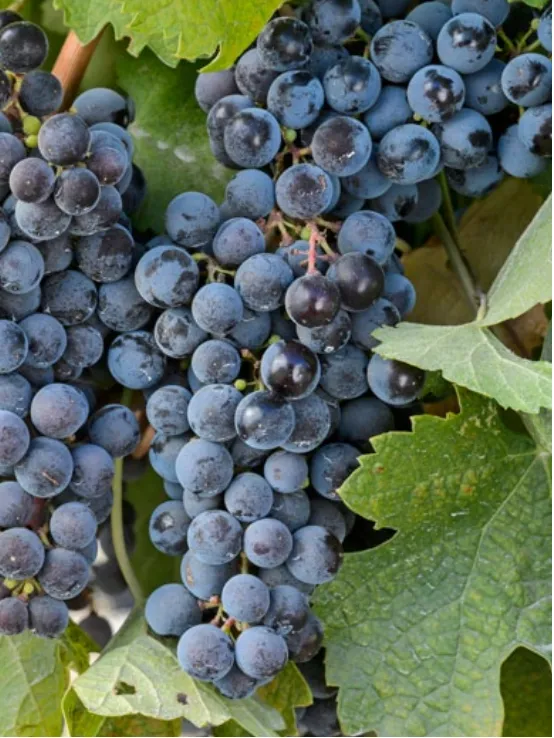In southern Napa County down around American Canyon, between the equatorial-like line of Highway 12 down to the Terre del Fuego of Highway 37, there blows a mysterious breeze that seemingly originates from the South Pacific. And nowhere is its influence more apparent than in the grapes that grow in this region and the wines they make.
Despite their longstanding viticultural history, the wines of south Napa and American Canyon remain undiscovered by most wine enthusiasts. Yet, there is a powerful incentive to go exploring.
The wines from this region exhibit refreshingly precise and powerful flavors. The white wines often exhibit a tropical citrus-like acidity, while there is refreshingly lighter alcohol in the brightly flavored reds. Red or white, there is a razor-sharp focus on fruit tones in South Napa wines.
Adjacent to San Pablo Bay and American Canyon, the rolling hills and deep canyons create a unique terroir moderated by the bay’s thermal mass, resulting in a stable yet cool-climate wine-growing region.
The area’s modern viticulture history traces back to the mid-1980s when Ken Nerlove of Elkhorn Peak planted the earliest vines in the area with assistance from Kent Rasmussen. Elkhorn Peak, still managed by Nerlove and his daughter, Elise, stands out for its distinctive growing conditions.
Nerlove described wine growing in south Napa: “On a summer day, we can be 30 degrees cooler here compared to upper Napa Valley, (but) still ripen everything we want perfectly for our style, and yet in winter we have never needed frost protection at our site even once.”
Don Clark of Nord Vineyard Service concurred. “From the water’s edge up through the canyons, it is not as foggy as Carneros, making for riper grapes. That evolved over the years to a noticeable rich, mellow citrus fruit tone in Chardonnay and powerful yet restrained (lower alcohol) complexity in our reds completely unlike the rest of Napa.”
The grower’s challenge is moisture and the ever-present wind.
Southern Napa can be divided into four key zones: Lowland flats by the bay or in canyons, warmer hillsides, limestone soils and clay soils. The constant presence of wind and moisture adds layers of complexity to the region's farming practices. Notably, the limestone-rich American Canyon zone faces threats from encroaching development over this rare soil, a real concern for local Euro-centric winemakers who understand how limestone contributes complexity to finished wines.
A diverse array of vignerons populate the lower Napa region. There are grape growers of all sizes, small family winegrowers, high-end cult wines, mid-sized independent wineries and large-scale multinational producers.
The quality of the grapes this region produces is underscored by the names of wineries that have vineyards there, including Grgich Hills Estate Winery, Hill Family Estate, Levendi and Arnot-Roberts Winery in Healdsburg.
Tasting the wines
Here is a glimpse into some of the wine treasures awaiting those who set sail on the South Napa breeze.
Arnot-Roberts Winery:
Limited production from Watson Ranch, directly above the old limestone quarry in American Canyon. “Wines from this area have real energy and freshness. It’s amazing this area is off people’s radar,” said Arnot. “It should be its own AVA.”
· Chardonnay (2022) Opens with a delicate earthy profile that evolves into bold and assertive citrus tones, light oak, and a complex profile. Perfect paired with poultry. Like lemon curd on sourdough bread.
· Cabernet Franc (2021): Controversial, Loire-like style with explosive cherry-pie aromas that fly out of the glass like a parkour racer. Whole cluster fermentation accentuates a moderately tannic finish not found in most Cabernet Franc.
Elkhorn Peak:
A Jameson Canyon hillside vineyard with decades of wine-growing experience on the land.
· Pinot Noir (2019): Smoldering upfront, revealing a fuller-bodied blaze of red fruits and a lovely, berry-fruit finish. There is a fire in the hearth of this wine.
· Pet Nat Sparkling Pinot Noir (2022): Clean (disgorged!) and vibrant Pet Nat with explosive strawberry/cherry tones, a must-try for adventurous bubble seekers. It’s like hitting a 777 jackpot on your wine country slot machine!
Grgich Hills:
On low rolling hills between American and Jameson Canyons sits the largest single Chardonnay vineyard block for GH. “This is the source of the exuberant fruit tones in our wines. We are now a regenerative farm as we’ve learned the soil is critical to maintaining viticultural balance in the vines in this cool, damp environment,” a Grgich Hills representative said.
· Sauvignon Blanc “Essence” (2021): A sea foam breeze aroma, bracing acidity, and bright citrus lime finish create a delicious experience. A golden shawl around a chiseled shoulder.
· Violetta (2021): 98 Points. A rare Botrytis-infected dessert wine with stunning apricot and peach aromas, brilliant acidity, and a dreamy finish. What are the odds of lightning hitting a perfectly ripe stone fruit (apricot) and the juice flowing into the glass? Spectacular!
Hill Family Estate:
The low vineyard is on a bluff just across the brackish Napa River, but the wine screams “I want to be in South Napa!”
· Albariño (2022): Lively ocean-wind aroma with assertive lemon-rind acidity. A gorgeous expression of Albariño. A sunflower in a field of sour grass.
· Syrah (2021): sold out.
Levendi Winery:
Low, cool vineyard deep in Jameson Canyon. Off-the-bay winds in summer blow damp and cold through the canyon toward the Central Valley. “The wind produces profound fruit yet restrained elegance in our wines,” said Levendi’s Steve Ebol.
· Estate Chardonnay (2021): Fresh sea breeze aromas, plush mid-palate texture and a bright lemon citrus finish. Butterflies and hearts are blowing on the breeze.
· “Perspective” Chardonnay (2021): This is fun, with crisp, tropical citrus tones and a mouthcoating viscosity on the finish. A beach chair in the tropics.
· Rose of Pinot Noir 2022. Gloriously scented by raspberry and citrus notes, the wine is mildly fruit flavored with explosive citrus acidity and a tart, creamy, fruit-cheesecake-like quality.
Mumm Napa:
While Mumm Napa pulls a lot of fruit in from the area, all goes into larger blends. Still, south Napa’s precise fruit tones show through. The grower relations team that manages Mumm Napa’s low sites on the flats by the Bay said, “Our sites give assertive acidity yet fully ripe flavors. It’s like growing in a rain cloud without the rain.”
· Pinot Meunier 2020:. A fun, rich wine bursting with bright raspberry and cream tones. This is a delicious find, like a free game on a pinball machine.
· Blanc de Blanc Reserve: Crisp with green apple skin and mild pastry dough notes. Everyone at the party makes extra toasts just to get more of this wine!
· NV Brut Reserve Rose: Joyous and crisp with bright cherry tones and lingering acidity. An exciting little cherry race car zooming around the palate’s racetrack.
Tracking down these wines is worth the challenge. Elkhorn Peak Cellars (elkhornpeak.com), classified as a “verified micro-producer” is one of the small wineries pushing for a change to the small winery tasting room exemptions in Napa County. The largest winery in the region is Laird’s Sunrise Ranch (Sunriseranchwinery.com). Levendi Winery, (levendiwinery.com), which also owns Chardonnay Golf Club on Jameson Canyon Road, has a tasting room at 1465 First St. in downtown Napa.
There is an undiscovered treasure chest of fun wines around South Napa and American Canyon City, shaped by the region's unique climate and soils. May its tropical breeze fill your sails one day, too.
Peter Posert is a writer with deep roots in Napa Valley. Contact him at peter@highway29.com.







